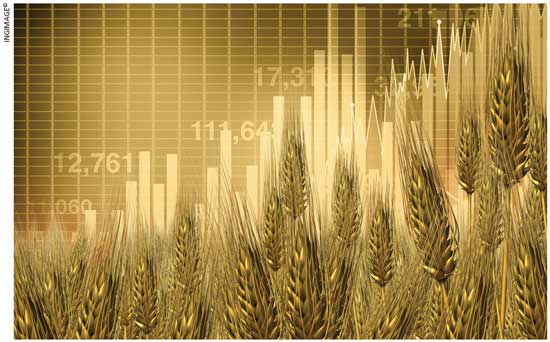FOOD SECURITY
RISK OF WORLDWIDE HUNGER
Akila Wijerathna recommends strategies to prevent an impending catastrophe
Conflicts, climate change and the COVID-19 pandemic’s economic and social impacts have caused acute hunger in the world. Inequalities and a lack of social safety nets have worsened the problem. The war in Ukraine – the world’s breadbasket – has exacerbated the problem of rising food prices for the poor as violence, climate shocks and the possibility of a worldwide recession threaten millions.
The FAO and World Food Programme (WFP) expect acute food insecurity to worsen in 19 hunger hotspots during the outlook period from October 2022 to January 2023. About 345 million people in 82 countries are food insecure, which is up from 282 million last year.
In addition, 50 million people in 45 countries risk starvation without aid. The FAO-WFP report recommends country specific short-term protection measures and emergency action to meet current humanitarian needs.
Climate change is a significant cause of global hunger and it affects all inhabited regions. Over the past decade, catastrophic weather and climate-related calamities have harmed some 1.7 billion people. Ironically, communities that are least responsible for global warming are the ones suffering the most due to fallout from climate change.
The IMF estimates that rising food and fertiliser import costs for food insecure countries will add US$ 9 billion to their balance of payments challenges in 2022/23. This will reduce international reserves, and imports of food and fertiliser.
Even if food prices have dropped from recent highs, high food and energy prices have caused a cost of living crisis that’s likely to worsen poverty and hamper growth, and potentially fan political instability.
As a result, policy makers in many countries have introduced fiscal measures to protect people from the current food crisis. Last year alone, it was estimated that highly exposed countries needed as much as US$ 7 billion to help their poorest households cope.
Debt levels of low and middle income nations (LMICs) have exploded, and their currencies have lost value. Approximately 60 percent of low income countries are now experiencing or remain susceptible to financial crises.
According to a report by the International Committee of the Red Cross (ICRC), climate-related calamities have affected an estimated 1.7 billion people in the past decade. The current food crisis is a matter of affordability, meaning that nutrition is available but priced beyond the means of millions of individuals. Over 60 countries have annual food inflation rates of 15 percent or more.
The aim is to prevent today’s ‘affordability crisis’ from becoming an ‘availability catastrophe’ of tomorrow. This involves preventing global scarcity of agricultural supplies – notably, fertiliser for farmers.
Without it, the world will experience extreme food shortages that would severely affect the poor. This scenario must be avoided at all costs by assuring its timely and cheap availability. Priority must be given to rethinking farm policies as an economic and national security issue.
It’s also essential to understand the political economy of humanitarian inactivity concerning war and climate refugees. The cost of ongoing inaction in addressing core causes such as climate change and armed conflict will be measured in new human suffering and deaths. On its current trajectory, the world will continue to produce more displaced people for decades.
Solutions cannot be implemented overnight, and we can’t afford to be complacent and allow the political will that’s required to address these core causes of the current crisis to vanish until the next catastrophe occurs.
Four policy sectors need immediate action to alleviate the global food crisis and prevent human suffering.
First, urgently provide appropriate support for food insecure people through the WFP, other humanitarian aid and efficient domestic budgetary measures. Global policy makers must battle inflation and protect the weak to ease the cost of living crisis. Short-term social aid programmes should be initiated to provide emergency food or cash to the impoverished.
Second, free trade moves food from surplus to needy places – especially within regions.
Third, enhance food production and distribution, by providing fertiliser and crop diversity. Trade financing and supply chain strengthening are needed to address food price shocks. The World Bank and other multilateral development banks will have to help countries improve transportation and infrastructure, and finance agricultural commodities and other food goods.
Fourth, climate resilient agriculture will boost crops. Climate change is increasing food insecurity and low income countries (especially those in Sub-Saharan Africa) are the least prepared to face its impacts. Low-cost and high impact solutions should be customised to suit local circumstances including investing in novel types of crops, water management and information dissemination.




